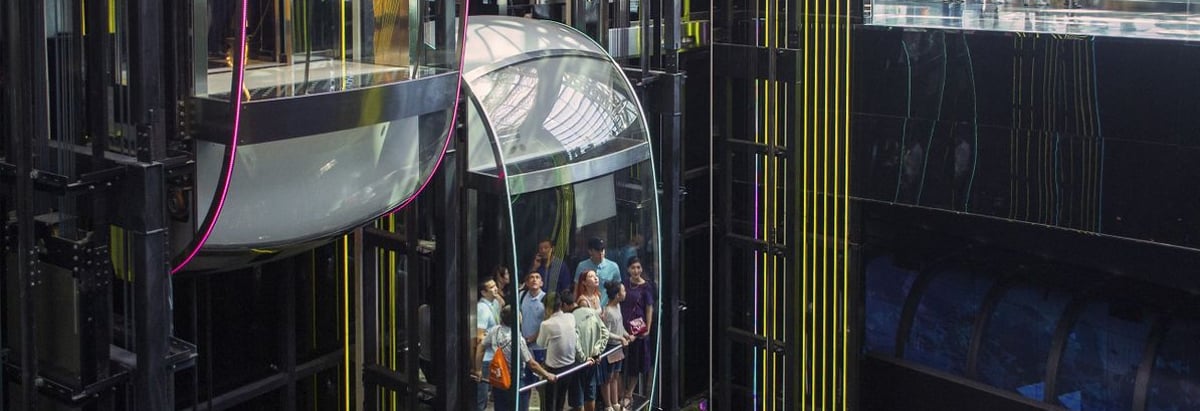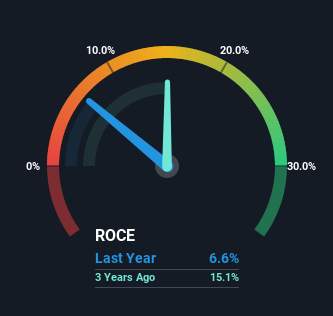Million Hope Industries Holdings' (HKG:1897) Returns On Capital Not Reflecting Well On The Business

To find a multi-bagger stock, what are the underlying trends we should look for in a business? In a perfect world, we'd like to see a company investing more capital into its business and ideally the returns earned from that capital are also increasing. If you see this, it typically means it's a company with a great business model and plenty of profitable reinvestment opportunities. However, after investigating Million Hope Industries Holdings (HKG:1897), we don't think it's current trends fit the mold of a multi-bagger.
What is Return On Capital Employed (ROCE)?
For those who don't know, ROCE is a measure of a company's yearly pre-tax profit (its return), relative to the capital employed in the business. Analysts use this formula to calculate it for Million Hope Industries Holdings:
Return on Capital Employed = Earnings Before Interest and Tax (EBIT) ÷ (Total Assets - Current Liabilities)
0.066 = HK$40m ÷ (HK$714m - HK$106m) (Based on the trailing twelve months to September 2021).
Thus, Million Hope Industries Holdings has an ROCE of 6.6%. In absolute terms, that's a low return and it also under-performs the Building industry average of 11%.
See our latest analysis for Million Hope Industries Holdings

Historical performance is a great place to start when researching a stock so above you can see the gauge for Million Hope Industries Holdings' ROCE against it's prior returns. If you'd like to look at how Million Hope Industries Holdings has performed in the past in other metrics, you can view this free graph of past earnings, revenue and cash flow.
The Trend Of ROCE
On the surface, the trend of ROCE at Million Hope Industries Holdings doesn't inspire confidence. Around five years ago the returns on capital were 50%, but since then they've fallen to 6.6%. Although, given both revenue and the amount of assets employed in the business have increased, it could suggest the company is investing in growth, and the extra capital has led to a short-term reduction in ROCE. And if the increased capital generates additional returns, the business, and thus shareholders, will benefit in the long run.
On a related note, Million Hope Industries Holdings has decreased its current liabilities to 15% of total assets. Since the ratio used to be 65%, that's a significant reduction and it no doubt explains the drop in ROCE. Effectively this means their suppliers or short-term creditors are funding less of the business, which reduces some elements of risk. Some would claim this reduces the business' efficiency at generating ROCE since it is now funding more of the operations with its own money.
What We Can Learn From Million Hope Industries Holdings' ROCE
In summary, despite lower returns in the short term, we're encouraged to see that Million Hope Industries Holdings is reinvesting for growth and has higher sales as a result. These trends are starting to be recognized by investors since the stock has delivered a 11% gain to shareholders who've held over the last three years. So this stock may still be an appealing investment opportunity, if other fundamentals prove to be sound.
One final note, you should learn about the 5 warning signs we've spotted with Million Hope Industries Holdings (including 2 which are a bit concerning) .
For those who like to invest in solid companies, check out this free list of companies with solid balance sheets and high returns on equity.
New: Manage All Your Stock Portfolios in One Place
We've created the ultimate portfolio companion for stock investors, and it's free.
• Connect an unlimited number of Portfolios and see your total in one currency
• Be alerted to new Warning Signs or Risks via email or mobile
• Track the Fair Value of your stocks
Have feedback on this article? Concerned about the content? Get in touch with us directly. Alternatively, email editorial-team (at) simplywallst.com.
This article by Simply Wall St is general in nature. We provide commentary based on historical data and analyst forecasts only using an unbiased methodology and our articles are not intended to be financial advice. It does not constitute a recommendation to buy or sell any stock, and does not take account of your objectives, or your financial situation. We aim to bring you long-term focused analysis driven by fundamental data. Note that our analysis may not factor in the latest price-sensitive company announcements or qualitative material. Simply Wall St has no position in any stocks mentioned.
About SEHK:1897
Million Hope Industries Holdings
An investment holding company, engages in the design, supply, and installation of facades and curtain wall systems primarily in Hong Kong and Mainland China.
Flawless balance sheet and fair value.
Market Insights
Community Narratives



